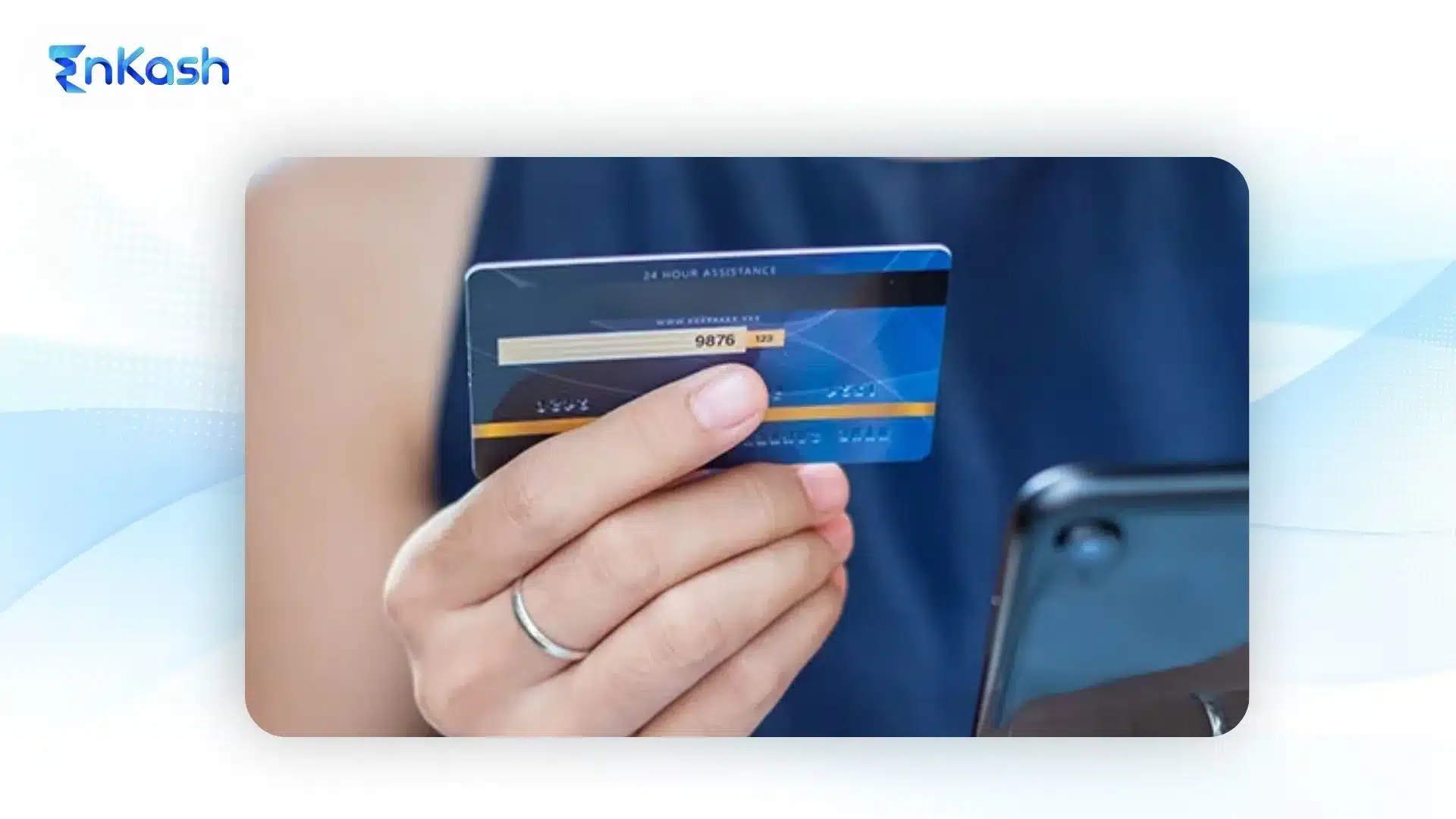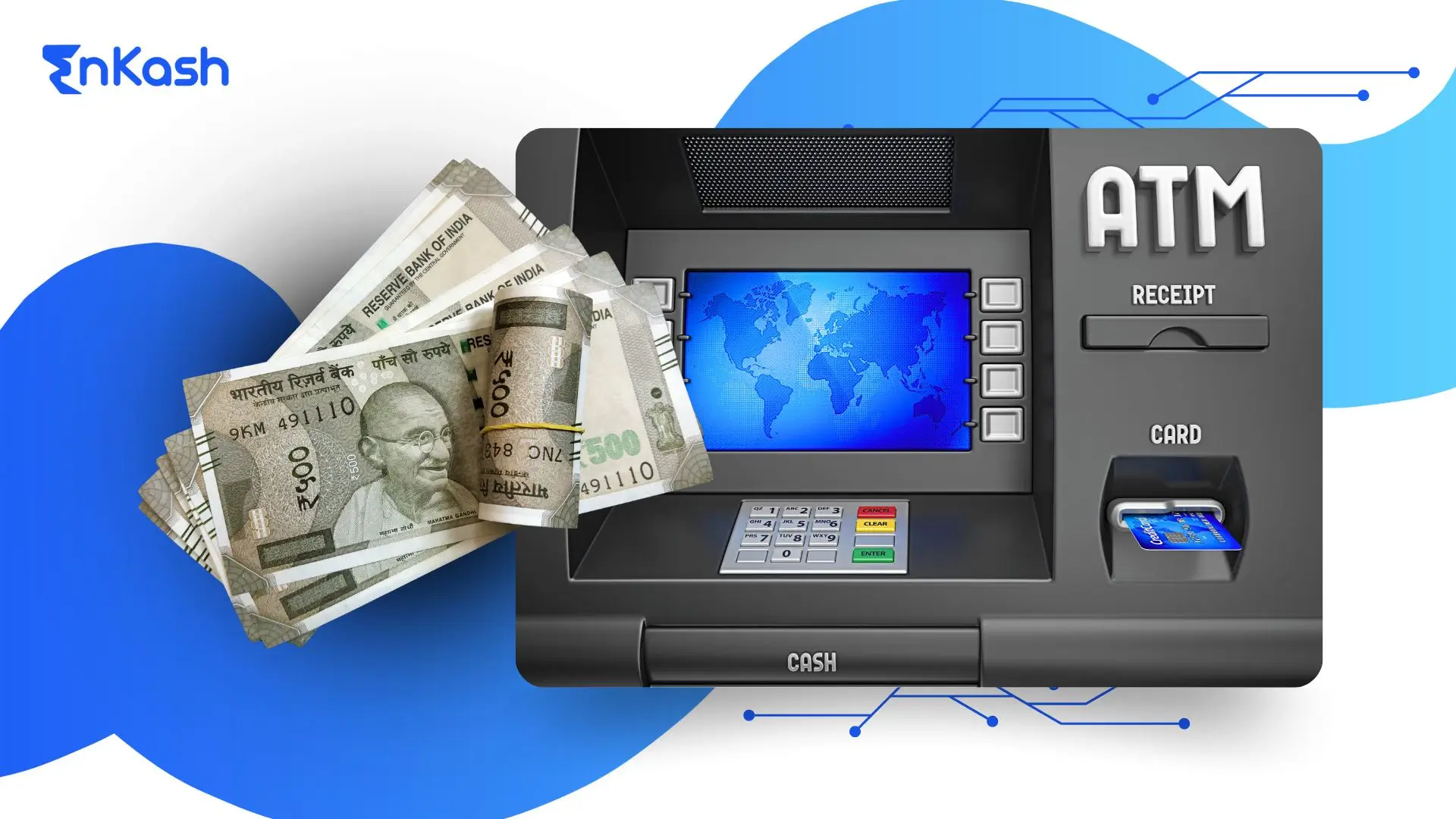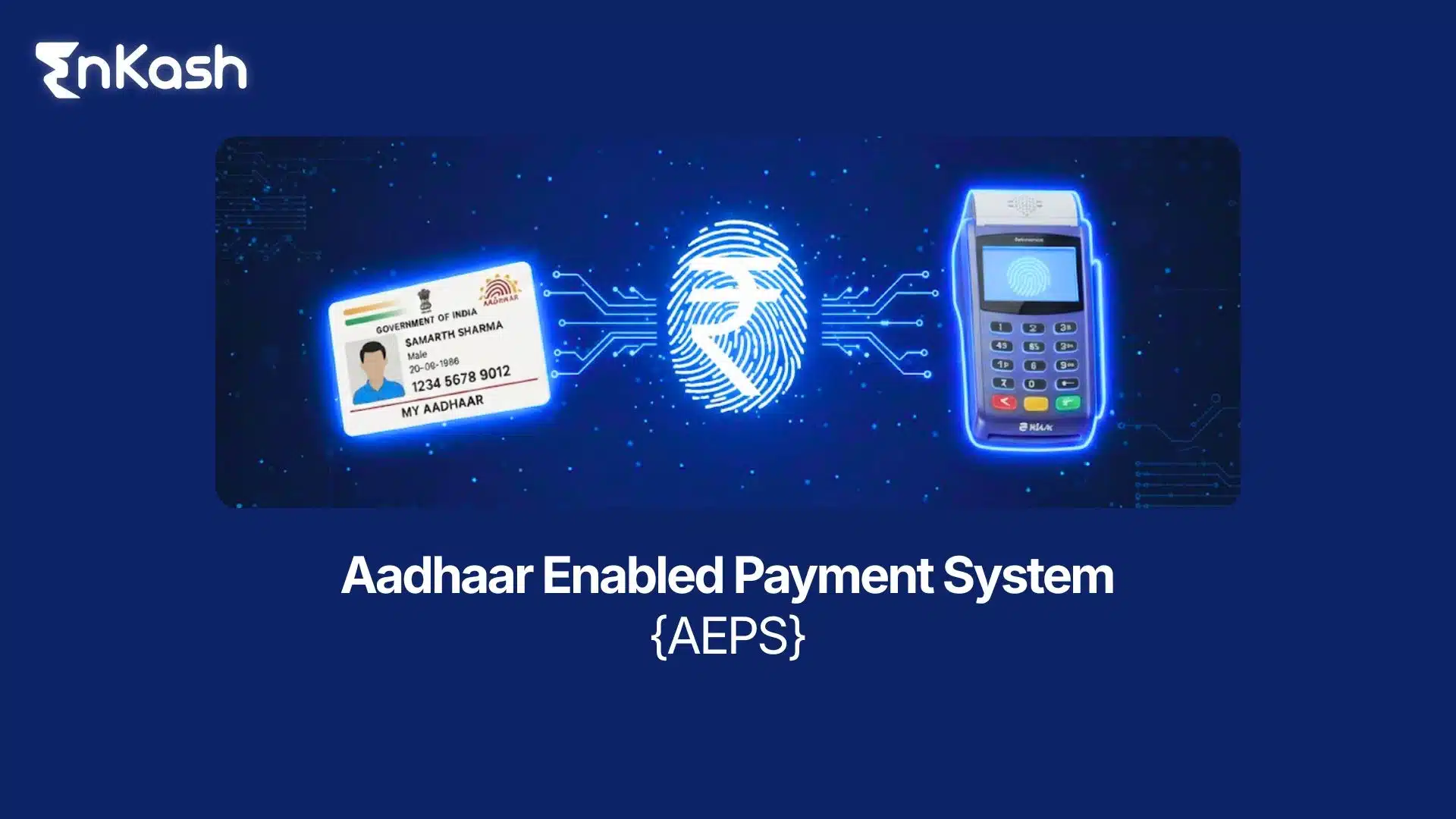Digital payments have become a regular part of daily life. People rely on debit and credit cards for shopping, travel, and even small purchases. With this growth has come a rise in fraud attempts, making security stronger than ever before. A key safeguard in this system is the CVV.
The CVV full form is Card Verification Value. It is a short numeric code printed on every card, usually three digits, and it is checked whenever you make a card-not-present payment, such as online shopping or a mobile transaction. The purpose of this code is simple. It confirms that the person making the payment has the physical card in hand, not just the number copied from somewhere else.
So when you ask, “What is CVV?”, the answer is that it is a critical part of the card verification process. It is separate from your PIN and your OTP. Those are used in different stages of security, but the CVV number works directly at the time the transaction is initiated.
The importance of this small code is easy to miss. Yet, without the CVV in card transactions, the chances of fraud would be much higher. Every bank and payment network treats it as an essential step for validation, and financial regulators require it for online transactions.
This blog explores the subject in detail. It covers the CVV full form in banking, how the code is generated, where it is placed on cards, and why it continues to play a central role in protecting digital payments.
What is CVV Full Form and Meaning
CVV in banking refers to a unique code printed on every debit and credit card. This number is not embossed like the card number. It is deliberately printed separately so that it cannot be copied through normal impressions or scans.
When people ask, “What is the CVV number on a debit card?”, the answer is that it is the three-digit code you see on the back of the card, usually next to the signature strip. In some cards, such as premium networks, it may be four digits and placed on the front. Regardless of the position, the purpose remains the same.
The CVV in card payments acts as a second check along with the card number and expiry date. It ensures that someone attempting a transaction does not just know the card details but also has access to the physical card. This is why merchants are not allowed to store it once a transaction is complete.
In banking terms, the CVV number’s full form represents an added layer of verification. It differs from a security PIN, which is used in physical transactions, and from OTPs, which are sent during online purchases. Each has its own role, but the card verification value is the constant across all cards.
So, if someone asks, “What is a CVV code?” or “What does CVV stand for?”, the explanation is simple. It is a code generated by banks and printed on the card to make digital payments safer.
Evolution of CVV in Payment Systems
The idea of the CVV number came up when banks and networks realised that the rise of card transactions also created new fraud risks. Earlier, when cards were used mainly in shops and ATMs, the card could be checked physically, and the PIN served as the main security tool. But with the growth of e-commerce and remote transactions, criminals found ways to misuse stolen card numbers.
To stop this, the card verification value was introduced. It added a new factor that was not part of the embossed card number or the magnetic stripe. This meant that even if someone had copied or stolen the card details, they could not complete a digital transaction without the CVV code.
Over the years, the role of CVV has grown stronger. When people ask “what is CVV in card transactions?”, the answer lies in this history. It was designed to protect digital and card-not-present payments. Today, every payment gateway and banking system treats it as mandatory.
The CVV’s full form in banking reflects its purpose clearly. It is about verification. Unlike a password, which can be changed, the CVV stays the same until a card is replaced. This permanence was intentional, as it ensured stability in the payment process.
From its early use in international card systems to its widespread role in domestic payments, the CVV number has become a universal standard. It stands as proof that even a small code can transform the way transactions are secured.
Structure and Types of CVV
The CVV number is not a random code printed on cards. It is carefully structured by banks using secure algorithms. To understand it better, it helps to look at the different forms in which it exists and how each one works.
CVV1 in Physical Transactions
The first type is called CVV1. It is stored in the magnetic stripe or chip of the card and is used only during card-present transactions. When a card is swiped or inserted at a point-of-sale machine, the system reads this hidden CVV. The customer never sees this number, but the bank checks it in the background before authorising the payment. If the CVV1 data does not match, the transaction is blocked.
CVV2 in Online Transactions
The CVV2, or printed code, is the number that people usually refer to when they ask “what is a CVV number in a debit card?” or “what is a security code in a debit card?”. It is the three-digit code on the back of most debit and credit cards. In some networks, it is four digits and placed on the front. This code is required for all online and mobile payments. Since merchants are not allowed to store it, every new transaction requires the customer to re-enter the CVV code.
Other Variants (CVC, CSC, CID)
Apart from CVV1 and CVV2, there are other terms like CVC, CSC, or CID. All of these are forms of card security codes created for the same purpose: verification. The naming varies across payment systems, but the role is the same: to confirm that the cardholder is genuine.
Together, these types form the backbone of card verification. Whether it is at a shop or on an e-commerce site, the card verification value ensures that the transaction is tied back to the card itself, not just the card number.
Placement of CVV on Cards
The position of the CVV number on a card is fixed so that it can be easily found by the user but not confused with the main card details. Its location also varies slightly depending on the type of card.
Debit Card CVV Location
CVV is printed on the back side of the card, near or just below the signature panel. It is usually a three-digit code. This placement makes it visible for the user to enter during online transactions but keeps it separate from the 16-digit card number on the front.
Credit Card CVV Location
The CVV in card transactions for credit cards is also most often printed on the back, in the same manner as debit cards. Some credit cards, however, have a four-digit code placed on the front. This depends on the card network, but the idea remains the same, the number must be easy to identify during payments.
Variations Across Networks
Different payment networks use either three or four digits for the CVV code. The purpose, however, does not change. It is always meant to confirm card authenticity and reduce fraud in card-not-present transactions.
How CVV is Generated
The CVV number may look like a simple three or four digit code, but the way it is created is highly technical. Banks use secure systems to make sure every card verification value is unique and impossible to guess.
Inputs Used in Generation
When a card is issued, the bank uses multiple details to generate the CVV code. These include the primary account number, the expiry date, and a service code linked to how the card can be used. Along with these, the bank adds secret keys that are never shared outside its secure environment. This mix of visible and hidden data ensures that no two cards have the same CVV number, even if other details look similar.
Cryptographic Algorithms
The inputs are run through strong cryptographic algorithms inside what are known as hardware security modules. These devices are designed to protect sensitive banking operations. The output of this process is a long string of numbers, which is then shortened or “truncated” into the three or four digits that appear as the CVV in the card. Because the algorithm depends on secret keys that only the bank knows, it is impossible for outsiders to reverse-engineer or predict the correct code.
Verification During Transactions
During every transaction, the payment system sends the card details, including the CVV number, to the issuing bank. The bank re-creates the expected CVV using the same algorithm and compares it with the code entered by the customer. If both match, the payment goes through. If not, the transaction is declined. This real-time check ensures that stolen card numbers without the correct CVV code cannot be used for online payments.
In short, the generation and validation of the card verification value show how a small code can act as a powerful shield in the payment process.
Security Role of CVV
The CVV number is a small code with a very large responsibility. It strengthens the payment process by creating an additional checkpoint before money is allowed to move. In a world where transactions are completed in seconds, this little detail helps keep both customers and businesses safe.
Protection in Card-Not-Present Transactions
The biggest use of the CVV code is in situations where the card is not physically present. This includes online shopping, mobile payments, and phone-based transactions. In these cases, there is no way for the merchant to see or touch the card. Instead, the system depends on digital information typed in by the customer. The card verification value is part of that information, and it is verified instantly by the bank. If the digits entered do not match what is on record, the transaction is declined. This simple step reduces the misuse of stolen card numbers.
Fraud Prevention and Risk Control
By requiring the CVV in card payments, banks and merchants filter out many unauthorised attempts. A stolen card number by itself is not enough to complete a purchase. This makes fraud more difficult and lowers the financial loss faced by customers. It also reduces the number of chargebacks that merchants would otherwise have to handle. A mandatory CVV check brings greater trust to the digital payment system.
Compliance and Banking Norms
The CVV in banking is tied closely to compliance. Security rules clearly state that merchants cannot store CVV data once a payment is approved. This prevents the number from being exposed during a data breach. Banks and regulators monitor these rules and apply strict penalties for violations. By enforcing this, the financial system ensures that the CVV number always remains in the control of the cardholder alone.
The role of the CVV code goes beyond just approving transactions. It creates confidence for customers, safety for merchants, and stability for banks. In short, it is a vital layer of security that has become part of every digital payment made today.
Limitations of CVV
The CVV provides an important safeguard, but it is not designed to cover every risk in digital transactions. It works as a reliable checkpoint, yet there are clear limits to what it can achieve.
Phishing and Social Engineering Risks
The CVV is effective only when kept private. If someone is tricked into sharing it through a fake call, email, or website, fraud becomes possible. In such cases, the weakness lies in human error rather than the system itself.
Data Breach Exposures
Although merchants are not permitted to store the CVV, breaches have occurred where full card details, including this code, were exposed. Once leaked, the CVV no longer offers protection. The only option is to block or replace the card to stop misuse.
Limited Role in Tokenised Payments
In modern payment systems that rely on tokenisation or digital wallets, the CVV is sometimes not required for repeat transactions. Security is then handled by encrypted tokens or device-based checks. This reduces the role of the CVV in daily use.
Identity Authentication Gaps
The CVV confirms the presence of the card but does not confirm the identity of the person using it. If a fraudster holds both the card and the CVV, they can still attempt payments. This is why additional layers, such as one-time passwords or biometric checks, have become necessary.
The CVV remains valuable, but it must work alongside other safeguards to create a complete security framework.
In Conclusion
The story of digital payments proves how something so small can carry so much weight. The CVV looks like a random three or four digit figure printed on the card, yet it is woven into the backbone of secure transactions. Its role is simple: confirm that the card being used is genuine and in the right hands. Without it, online payments would feel far less safe.
Think about how commerce has shifted. Card numbers leak. Expiry dates get copied. Systems fail. Through all this, the CVV acts as a silent checkpoint. It asks for nothing more than those digits, but those digits can block fraud that would otherwise slip through.
That said, the CVV does not fight every battle. Phishing tricks, stolen wallets, or massive breaches remind us of its limits. This is why banks and regulators surround it with stronger tools: two-factor authentication, one-time passwords, biometrics, and tokenization. Together, these measures hold the line.
The CVV remains what it has always been: a steady filter in a fast-moving world of money. It may change shape with new technology, but its reason for existing will not. Every transaction needs that extra breath of certainty, and this code still gives it.
FAQs
1. Can two cards from the same bank have the same CVV number?
No, each card has its own unique CVV. Even if two cards are issued from the same bank account, their codes will differ because it relies on individual card data, such as the account number, expiry date, and encryption keys during generation.
2. How is an ATM CVV number connected to online fraud cases?
The term ATM CVV number is often misunderstood. ATMs do not use it, but when card data is skimmed at ATMs, criminals try to pair stolen card numbers with CVVs gathered through other means. This combination allows them to attempt online fraud, highlighting the importance of protecting CVV separately.
3. Does the CVV change if only the card expiry date is updated?
No, if the expiry date alone changes in the bank’s records, it number remains the same. A new CVV is generated only when the bank issues a fresh card. This ensures that customers continue to use a consistent code until they physically replace their card.
4. What role does CVV play in recurring subscription payments?
For recurring subscriptions, the CVV in card transactions is usually required during the first setup. After that, merchants use tokenised data to process renewals without requesting it again. This system balances convenience for customers with initial verification through the card verification value.
5. Can CVV protect against international online fraud?
Yes, the CVV code is valid worldwide. No matter where an online transaction originates, the issuing bank checks it before approving payment. Since merchants across countries follow the same rule, the CVV number in debit card or credit card provides a universal layer of security.
6. Why is CVV not used in contactless card payments at stores?
Contactless transactions rely on encrypted communication between the card chip and the payment terminal. It is not entered in these cases because the chip provides its own secure validation. This separation ensures that the security code in debit card transactions is reserved mainly for digital and remote payments.
7. How does CVV help in disputes or chargebacks?
When customers report unauthorised online transactions, banks check if the CVV was entered correctly. If the merchant processed the payment without verifying it, the liability often shifts back to them. This shows why the CVV full form, Card Verification Value, is central to resolving disputes in digital commerce.
8. What happens if the CVV is scratched off or unreadable?
If the CVV number on a debit card or credit card becomes unreadable, online payments cannot be completed. The bank usually advises blocking the damaged card and requesting a replacement. Since it is generated uniquely for every card, the new card will always carry a fresh code.
9. Can CVV be replaced by biometric verification in the future?
Biometric tools like fingerprint or facial recognition are growing, but the CVV will likely remain part of layered security. Biometrics confirm the person, while the card verification value confirms the card. Together, they create a stronger shield. Replacing it entirely would remove a simple yet effective defence against fraud.
10. Why is CVV different from the security features in magnetic stripes?
Magnetic stripes carry hidden validation codes like CVV1, used for in-store payments. The printed code or CVV2, however, is used for card-not-present transactions. Both serve different purposes. The stripe confirms authenticity at physical terminals, while the visible CVV in the card ensures online payments cannot proceed without the cardholder’s input.








